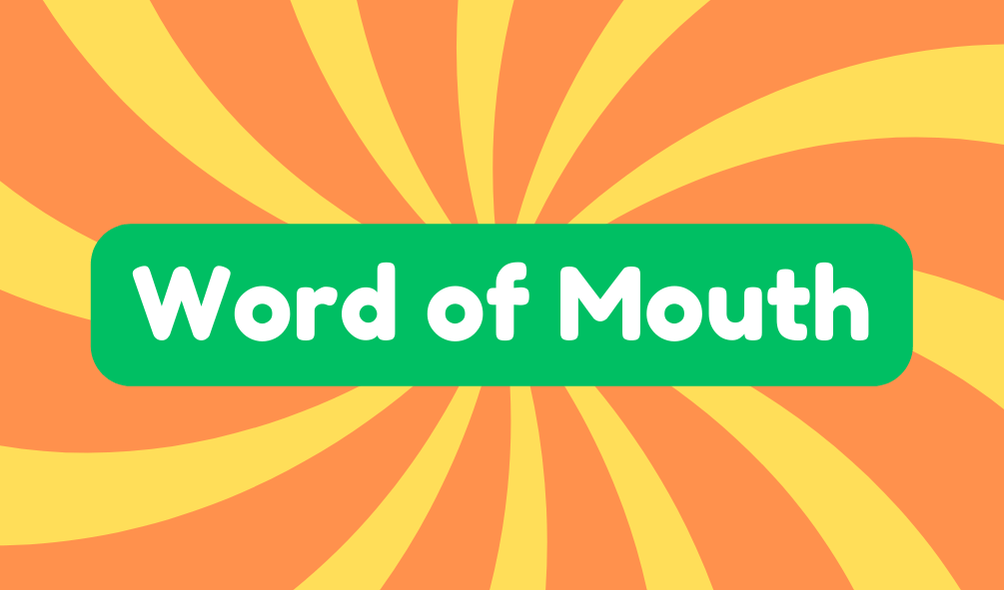Word of mouth is the informal sharing of opinions and experiences that shapes consumer behavior. This phrase dates back to 1533, evolving from formal communication to a more personal exchange. For instance, you might suggest a local coffee shop to a friend, a simple act that can boost its popularity. While it's often viewed as more trustworthy than ads, remember that not all shared opinions are reliable. Today, in our digital age, word of mouth remains a powerful influencer, affecting choices and brand reputations. Discovering how it impacts marketing can provide deeper insights into its significance.
Synonyms
When you think about word-of-mouth, several synonyms come to mind that capture the essence of sharing information through spoken communication. These terms emphasize the role of verbal exchanges and can add depth to your discussions on word of mouth marketing and verbal communication effectiveness. Consider these alternatives:
- Oral exchange
- Verbal referral
- Spoken recommendation
Each synonym sheds light on how individuals influence one another through conversation. Such nuances can enhance your understanding of how ideas spread and why they're often more trustworthy than traditional ads. Remember, while these terms might seem interchangeable, the context in which you use them can impact their effectiveness. So, choose wisely! Your communication can reshape perceptions and foster genuine connections.
Example of Sentences
Numerous effective examples capture the essence of word-of-mouth communication in various contexts. You can see how this phenomenon unfolds differently depending on cultural influences and effective strategies. Consider these scenarios:
- A local coffee shop climbs the charts of popularity simply through community buzz.
- Students often share tales of their school experiences, shaping reputations through spoken narratives.
- New tech products gain traction as users pass along their opinions, creating a ripple effect.
These examples highlight that while word-of-mouth can greatly boost visibility, it also carries risks. Negative stories can spread just as swiftly, leading to damaging perceptions. By understanding the nuances of word-of-mouth, you can better navigate its power and pitfalls in today's interconnected world.
Origin
Historically, the phrase "word of mouth" frequently traces back to 1533, as noted in the Oxford English Dictionary. This term encapsulates a significant part of our linguistic evolution, illustrating how information circulates through direct interactions rather than formal channels. Its historical influence is profound, as it highlights the trust and authenticity in shared communication.
Here's a visual representation of its evolution:
| Year | Context | Meaning |
|---|---|---|
| 1533 | Early documentation | Speaking to share info |
| 1700s | Informal exchanges | Building community trust |
| 1900s | Rise of mass media influence | Competing communication forms |
| 2000s | Digital transformation | Amplified reach via social media |
Recognizing this evolution helps you understand the enduring power of spoken communication in shaping perceptions and relationships.
Collocations
Collocations related to "word of mouth" play an important role in understanding how this phrase functions in everyday communication. Recognizing these connections can enhance your grasp of social influence and information sharing. Here are some useful collocations to reflect on:
- Word-of-mouth recommendations
- Word-of-mouth marketing
- Word-of-mouth advertising
These phrases illustrate how word-of-mouth can shape opinions and drive decisions. While "word-of-mouth" communication is often viewed positively, it's vital to be skeptical. Not all shared information is reliable, and personal biases can distort perceptions. Understanding these collocations can help you navigate the complexities of shared messages in a world where information spreads rapidly. So, be aware of how you interpret word-of-mouth influences, as they can greatly impact your choices and interactions.
How to Use in Everyday Language
Understanding how to use "word of mouth" in everyday language is essential to enhancing your communication skills. It's vital, especially in word of mouth marketing, where the impact can be profound. You can start by sharing valuable information with friends, engaging them in conversations that spark interest.
Here's a simplified table to guide you:
| Situation | Effective Communication Example | Word of Mouth Application |
|---|---|---|
| Product recommendation | "You have to try this new café!" | Friends sharing experiences |
| Event promotion | "You're gonna love this concert!" | Spreading excitement about events |
| Brand feedback | "This service is exceptional!" | Building reputation through trust |
| Community engagement | "Check out this local initiative!" | Influencing community choices |
| Review sharing | "My experience at this store was great!" | Driving consumer choices |
Use these insights to communicate effectively!
Why Is It Still Relevant Today?
In today's fast-paced digital world, word-of-mouth remains a powerful force in shaping opinions and driving consumer behavior. While many rely on flashy ads and influencer partnerships, remember that genuine conversations often hold more weight. Why? Because consumer trust is built on personal experiences shared among friends and family. This social influence plays an essential role in how products and services are perceived. People are more likely to trust recommendations from those they know than from a brand itself. In an age where online reviews can be manipulated, authentic word-of-mouth can cut through the noise, providing real insights. So, don't underestimate the power of a good chat; it's still relevant and impactful today, making it a vital tool for any savvy marketer.







